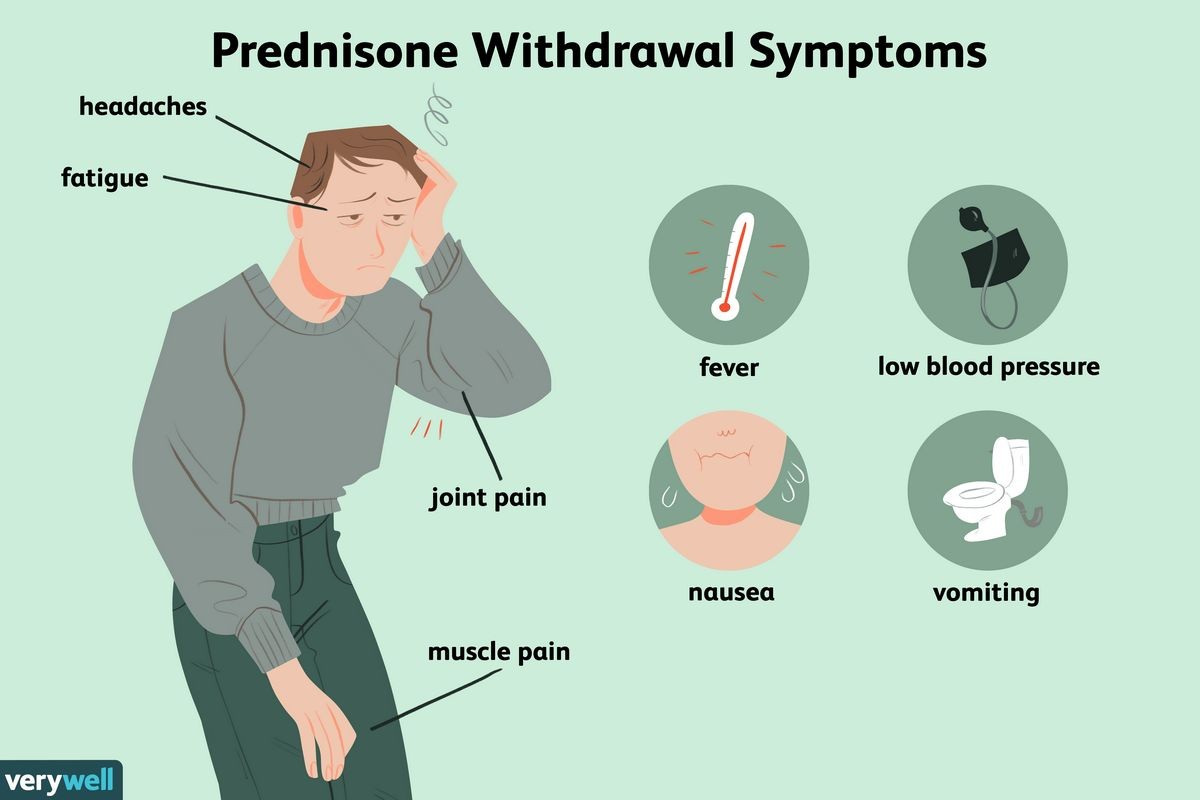
Contents
prednisone
Prednisone is an oral, synthetic corticosteroid used for suppressing the immune system and inflammation. It has effects similar to other corticosteroids like:
- triamcinolone (Kenacort)
- methylprednisolone (Medrol)
- prednisolone (Prelone)
- dexamethasone (Decadron)
These synthetic corticosteroids mimic cortisol, the naturally-occurring corticosteroid produced by the body’s adrenal glands. Corticosteroids have many effects on the body, but they’re primarily used for their potent anti-inflammatory effects in diseases and conditions where the immune system is involved, such as arthritis, colitis, asthma, bronchitis, skin problems, and allergies.
Prednisone needs to be converted to prednisolone by liver enzymes to be effective. It may not work as well in people with liver disease. The FDA approved prednisone in 1955.
What diseases and conditions does prednisone treat?
Prednisone is used to manage inflammatory conditions or diseases where the immune system plays a role. Only the most common or FDA approved uses are listed:
- Several types of arthritis
- Ulcerative colitis
- Crohn’s disease
- Systemic lupus
- Allergic reactions
- Asthma
- Severe psoriasis
It’s also used in the treatment of:
- Leukemias
- Lymphomas
- Idiopathic thrombocytopenic purpura
- Autoimmune hemolytic anemia
- Bronchitis
Corticosteroids, including prednisone, are commonly used to suppress the immune system and prevent organ rejection in transplant patients.
Prednisone is used as replacement therapy in patients with adrenal insufficiency.
What are the side effects of prednisone?
Side effects of prednisone and other corticosteroids range from mild annoyances to serious, irreversible organ damage. They occur more frequently with higher doses and prolonged treatment.
Common side effects include:
- Retention of sodium and fluid
- Weight gain
- High blood pressure
- Loss of potassium
- Headache
- Muscle weakness
- Nausea
- Vomiting
- Acne
- Thinning skin
- Restlessness
- Problems sleeping
Serious side effects include:
- Hiccups
- Puffiness of the face (moon face)
- Growth of facial hair
- Thinning and easy bruising of the skin
- Impaired wound healing
- Glaucoma
- Cataracts
- Ulcers in the stomach and duodenum
- Worsening of diabetes
- Irregular menses
- Rounding of the upper back ("buffalo hump")
- Obesity
- Retardation of growth in children
- Convulsions
- Anaphylaxis (severe allergic reactions like hives, itching, skin rash, swollen lips/tongue/face)
- Vision changes
- Congestive heart failure
- Heart attack
- Pulmonary edema
- Syncope
- Tachycardia
- Thrombophlebitis
- Vasculitis
- Allergic dermatitis
- Low blood pressure
- Amenorrhea (lack of menstruation)
- Newly onset diabetes
- Hyperglycemia
- Hypothyroidism
- Pancreatitis
- Anemia
- Amnesia
This drug also causes psychiatric disturbances, including:
- Depression
- Euphoria
- Insomnia
- Mood swings
- Personality changes
- Psychotic behavior
Other potential serious side effects include:
- Prednisone and diabetes: Prednisone is associated with new onset or manifestations of latent diabetes, and worsening of diabetes. Diabetics may require higher doses of diabetes medications while taking prednisone.
- Allergic reaction: Some people may develop a severe allergic reaction (anaphylaxis) to prednisone that includes swelling of the airways (angioedema) that may result in shortness of breath or airway blockage.
- Immune suppression: Prednisone suppresses the immune system and increases the frequency or severity of infections while decreasing the effectiveness of vaccines and antibiotics.
- Osteoporosis: Prednisone may cause osteoporosis, resulting in fractures. Patients taking long-term prednisone often receive calcium and vitamin D supplements. Bisphosphonates (e.g., alendronate, risedronate) may be necessary, and bone density scans can monitor osteoporosis development.
- Adrenal insufficiency and weaning off prednisone: Prolonged use of prednisone causes the adrenal glands to shrink and stop producing cortisol. Gradual tapering of prednisone allows the adrenal glands to recover.
- Necrosis of hips and joints: Long-term corticosteroid use can lead to aseptic necrosis of the hip and knee joints, requiring surgical replacement. Prompt reporting of hip or knee pain to doctors is crucial for patients taking corticosteroids.
What is the dosage for prednisone?
The initial dosage of prednisone varies depending on the condition and patient’s age.
- It’s recommended to take this medication with food.
- The starting dose may be 5 mg to 60 mg per day, adjusted based on the response.
- Corticosteroids don’t produce immediate effects and may take days to see maximal effects. It may take longer for conditions to respond to treatment.
- When discontinuing prednisone after prolonged therapy, the dose should be tapered to allow the adrenal glands time to recover.
What are the prednisone withdrawal symptoms?
Patients should be slowly weaned off prednisone. Abrupt withdrawal causes side effects because the adrenal glands can’t produce enough cortisol to compensate, leading to corticosteroid insufficiency symptoms including:
Weaning off prednisone gradually allows the adrenal glands to recover and resume cortisol production. During the recovery period, short courses of corticosteroids may be necessary during times of stress.
Which drugs interact with prednisone?
- Prednisone may interact with estrogens and phenytoin (Dilantin). Estrogens may reduce prednisolone levels in the body, increasing side effects. Phenytoin may reduce the effectiveness of prednisone, requiring an increased dose.
- Combining corticosteroids with drugs that reduce potassium levels (e.g., amphotericin B, diuretics) increases the risk of hypokalemia and serious side effects such as heart enlargement, arrhythmias, and congestive heart failure.
- Corticosteroids may increase or decrease the response to warfarin therapy. Close monitoring is necessary.
- Prednisone can increase blood glucose levels, reducing the response to diabetes drugs.
- Prednisone may increase the risk of tendon rupture when combined with fluoroquinolone antibiotics (e.g., ciprofloxacin, levofloxacin). Tendon rupture is especially common in the elderly.
- Combining aspirin, ibuprofen, or other NSAIDs with corticosteroids increases the risk of stomach ulcers.
- Barbiturates, carbamazepine, rifampin, and drugs that increase liver enzyme activity may reduce blood levels of prednisone. Conversely, drugs that reduce liver enzyme activity may increase prednisone levels.
What Are Biologics
and Biosimilars?
What Are Biologics
and Biosimilars?


